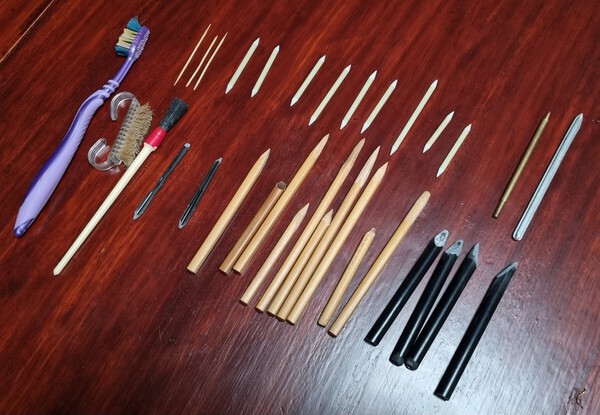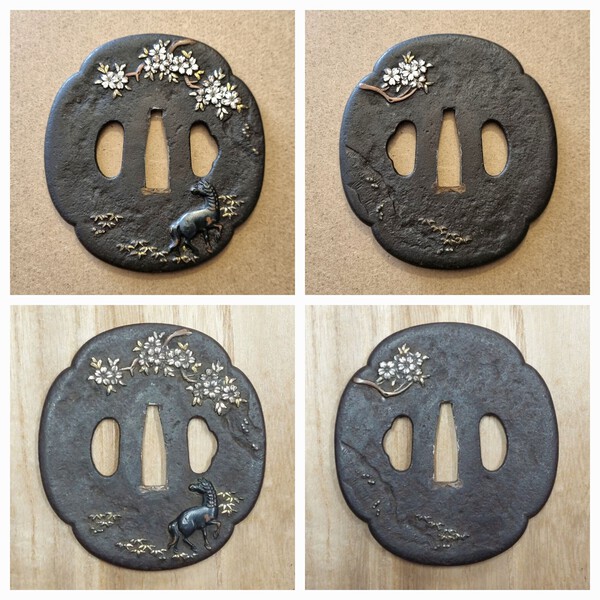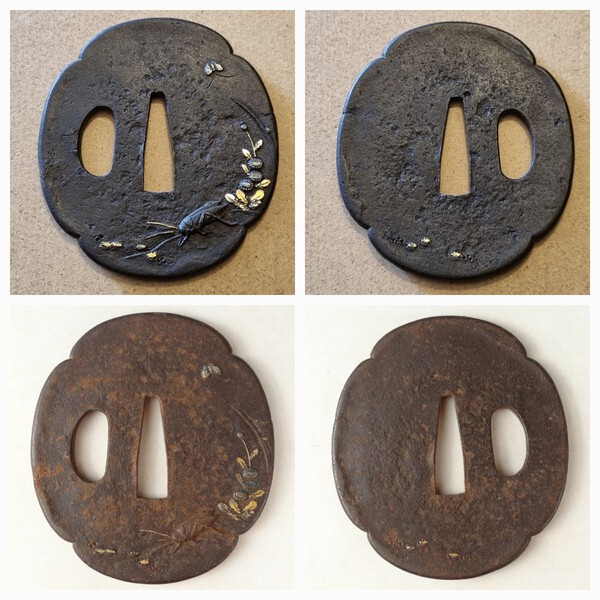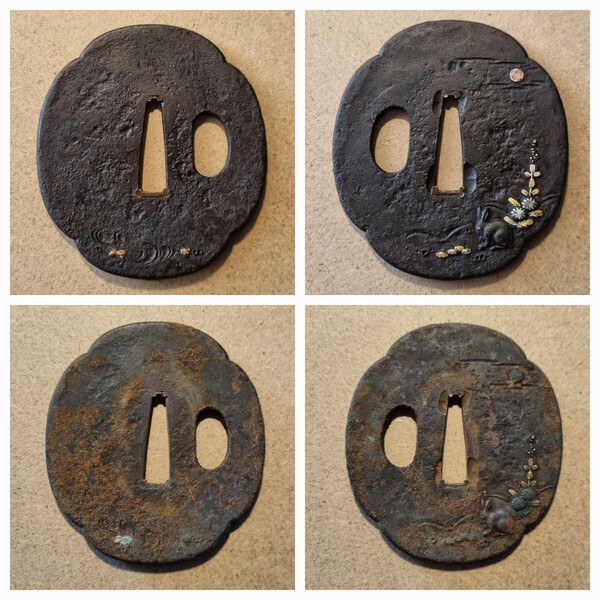-
Posts
633 -
Joined
-
Last visited
-
Days Won
3
Everything posted by Steves87
-
They do pop up quite a lot on ebay, mostly heavily corroded examples. But like Dale has shown, there are a lot of broken ones, too. Jean's idea about a museum is a good one, however, I would suspect most modern museum's won't take a lot of donor acquisitions these days due to space and policy reasons (like 90%). If they did take these examples, then 'weeding' or de-selecton policies would make it difficult to let them go. Donor material is especially hard as they can have certain conditions put on them at the point of acquisition... like having to be returned to the donor. If you are in Japan, are there not such examples at their antiquities markets? The last time I was in Japan, I found it hard to buy decent quality at the markets (maybe just the markets I stumbled across?) As for your yes or no question? My opinion is yes, but be cautious with which ones, maybe consult with at least two to three other collectors for agreeable suitable sacrificial candidates. And! ensure you share the knowledgeable results with the community.
-
Married Daisho? the red guy on your shoulder agrees.... you should probably go for it!
-
Here is another https://www.ebay.com.au/itm/304576006157?mkcid=16&mkevt=1&mkrid=705-154756-20017-0&ssspo=FefyZKiYR4C&sssrc=2349624&ssuid=OjC70kueRUa&var=&widget_ver=artemis&media=COPY
-
Thanks Luca, you have no doubt seen this Web page https://varshavskycollection.com/shingen-tsuba/ but it appears some of the examples are similar to your style of Shingen. It is hard to tell, but some appear to have the lacquer on them?
-
Excellent, thank you for sharing. I have seen examples before with what looks like lacquer between the wires. I used to assume this was for holding the wires still, or for preventing rust from forming internally. This example you have does not appear to have this, some do, some don't. Do you think oxidisation of the iron core is possible for this construction, without the lacquer present? Was this by any chance the Shingen Tsuba from the G. Murtha collection?
-
For sure! I haven't tried any of the chatgtp (or whatever it's called) but I was thinking last night it might be fun to see how that program goes in finding theme meanings by description
-
Nice one! That appears to be a semi common theme. I don't know what story it tells, but the similar Tsuba with the same theme always appear to have two buildings with a water body to the left, and a prominent tree behind. Some have bamboo or palms also. Here is another example
-
I think your photos are just fine for sale, although a little dark on the first one. But I totally get your point, and I totally understand your issues with photography. I myself, am not that competent when it comes to photography, but I have found three things which improve my photos when trying to convey the correct colours, and minimise shadows. The first two are a little bit contrary to Vitaly's experience, and they are using a beige to brown background (not white or black, I just cannot get it to work) and not using natural (diffused sun) light. I found that warm/yellow light (diffused) seems to work best so far. The only way to get rid of shadows behind the Tsuba from what I can tell, is to have a semi lit background at least 1 to 2 inches away. This means you need to use either a stand or a suspended clear glass/perspex plate (if laying flat). For sun vs lights comparison, the picture below is supposed to show you a Tsuba with what I would assume is a very similar colour to your example. The two pictures at the top are pretty much the exact colour of the guard 'in hand' (according to my computer and mobile screen settings). These top pictures were done with diffused warm light on a suspended perspex plate (no shadows) with a dark beige card below. The lower two pictures were done using diffused sunlight and sitting directly onto a pressed-card plate (shadows). The lower pictures do not show the real colours, however, they do show interesting extra colour details which are seemingly not visible to the naked eye. This is where I'm at with the photography of Tsuba, plenty more to learn, I know.
-
great advice Chris, I would also suggest reading this Haynes Article (shibuiswords.com) (masterpieces). This has been the single most influential piece of writing for me personally, especially the last four paragraphs (para. 7 to 10)
-
Great post there Bazza. Amber, you seem to be getting a good grasp on terminology from what we have read so far, and I would say books and online reading is excellent for picking up the terminology. As I have in the past, you may struggle with verbalizing the words when talking to certain people (Japanese speaking mostly). The number of times I have spoken certain Japanese words to my Kenjutsu or Iaido Sensei, with the response of a baffled look, is countless. The prime example when first starting out is the pronunciation of "Tsuka".
-
That is a good idea, just post the pictures though, not the link. Most people here would be pretty honest with not poaching a guard, but best to be sure. Is there a particular style you like? For example sukashi (open work) or inlays (like you have already), different shapes, motifs, or themes?
-
Well, hopefully that will be my full time job in just over a year (digitisation in the GLAM sector). I just bought this micro scope off ebay: https://www.ebay.com.au/itm/364057771123?mkcid=16&mkevt=1&mkrid=705-154756-20017-0&ssspo=h0hs0e3etbu&sssrc=2349624&ssuid=OjC70kueRUa&var=&widget_ver=artemis&media=COPY super cheap and connects via wireless methods will be interesting to see if it works, how can it be that cheap!? Edit: With the inspiration of the previously posted article link and the "photographing Nihonto" article in the downloads section, I made a light box to try and get rid of the shadows when photographing Tsuba. It took about an hour and I think the results are acceptable, so I might have to now go through and photo the whole collection. The subject sits on top of a perspex sheet which is suspended about an inch from the base of the box. The lights are movable and it makes it so much easier to adjust the light levels.
-
Maybe this one relates more to Jean's thread on concentric circles, but in terms of mei, I believe this one is something similar
-
Hello Marcos, I was wondering if there is an English conversion of: La investigación de monturas de sables japoneses en colecciones públicas españolas. Un punto de inicio para los estudios hispánicos sobre la materia I am interested in reading this for a university subject, I have access to it through my institution in its native language, and could probably get it translated, however, I don't think I could cite it as the institution is English speaking and it may go against subject policy. No problems if there is no translation, thank you.
-
I can confirm through first hand experience that the Nosyudo.jp guards do actually rust and are magnetic (at least the handful that have come my way)
-
Yep crane and i also yep, do it... there is nothing wrong with buying this modern repro stuff for other purposes, especially if it costs "nothing". I do it, either for iaito/working shinken mounting, sticking to boxes for decoration, or even as coasters or paper weights. It all falls perfectly into the other thread on Tsubafication. Just like I opened my big mouth on the Murtha collection (and thus, knocked myself out of the market) I'll also say it for modern repro... some of it IS collectable, the only examples I'm throwing out there are, the cas Hanwei/dragon king "Tsuba sets" and the Alva museum stuff. Have some fun with throw-away Tsuba!
-
The first one looks, and may be, "authentic" (in the sense of construction), but it is damaged through wear; possibly impact. The other two look very much as Jean says. On reviving the thread, possibly this is a good segway for @Spartancrest to post about the Kofu rain dragons in relation to the op's first question?
-
I actually had the tools out today, so I thought I might take a picture for the visual explanation of the fibreglass pens. In the photo you can see the the brushes, bamboo sticks, various fibreglass pens (some almost stubs now), pine toothpicks, and two mystery utensils for special occasions, which I won't go in to (Aluminium and brass).
-
Could be this thread I am thinking about, but I am sure I have seen an English conversion of the linked Sesko document
-
There is definitely something out there like this, it was posted on this forum around 2019 and was an historical publication of some kind. If I remember correctly it listed the top schools for the period (maybe 1910's?) And I'm pretty sure namban was near the top. It will be a big search if nobody else remembers it, but I'll give it a go
-
Richard is fairly spot in with the dangers of fibre glass pens, although, I suspect there are differing degrees of hardness to them. I have two different kinds, one tends to be able to get into solid stuff, where as the other just smudges, if that makes sense. Modern day tent struts can be cut down and worked into a suitable shape with a power sander. This picture is an example close to yours in both smith and condition, I used the pen for the plate and hard up to the inlay (and on the inlay), I used a pine toothpick. Everything else was soap and a "soft" spec toothbrush. Unfortunately I have issues with remembering to photo a Tsuba "before", the before photos in this case didn't show the rust well (or at all really) so focus on the wax removal on the sakura
-
-
Hi Marcos, I was unable to attend, but I will definitely be watching the recording if it becomes available. I am studying information institutions at university, and I can see that there may be some information that I could cite in research articles. I have to do some research into cultural collections soon, and preservation/disaster management is what I will likely be focusing on. Please let us know if there is a recording available.
-
ahh yes I did see that one back up. the seller is generally good, but they do often use a colouring of some kind. Whatever they use, it does leech when submersed in liquid.
-
I think you have summed it up well Brian. It is most definitely for the beginner, it touches on basic terms and features of Tsuba by exampling guards that are within the reach of any collector. It should make transitioning to the more scholarly texts just that little bit easier for someone testing the waters into collecting Tsuba.


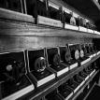


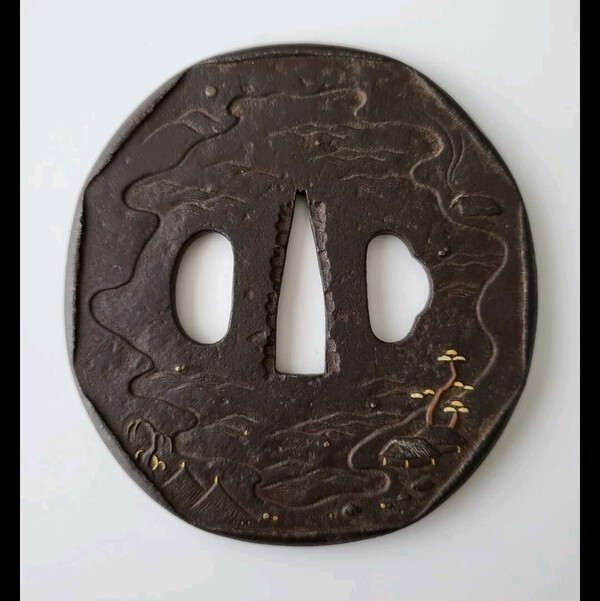
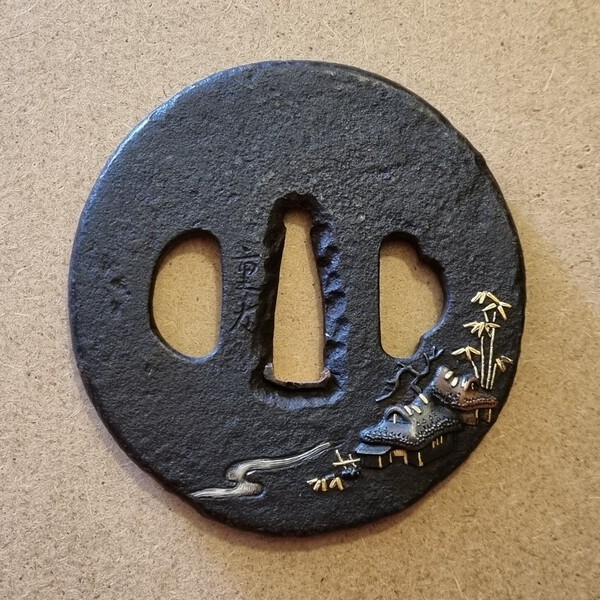
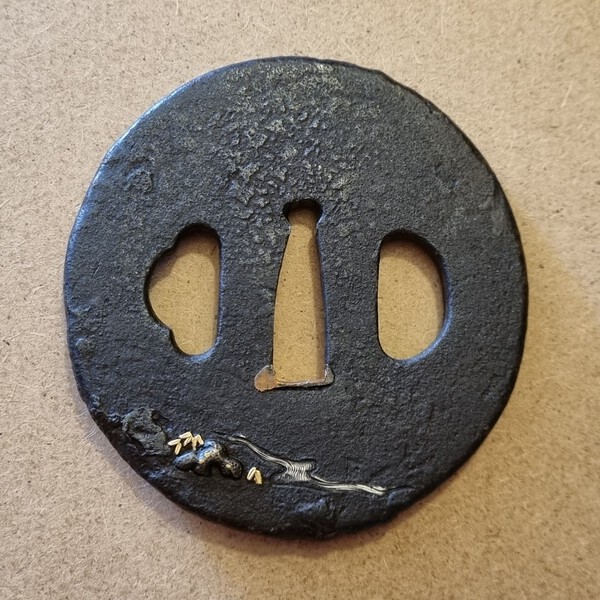






.thumb.jpg.9e791cf584712b4d8b9ca9240b0a99fe.jpg)

